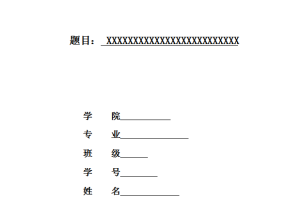This paper aims to study the problems of textile industry in Wujiang City, and proposed countermeasures to be taken, Wujiang City, the textile industry in the international and domestic competition in an invincible position. And facing international and domestic state of the environment starting from the textile industry in Wujiang City, the problems in the development process, the use of normative and empirical analysis, qualitative analysis and quantitative analysis, research methods, restricting city’s textile industry continued development factors based on the analysis presented through technological innovation to improve the core competitiveness of enterprises, the development of green textile industries, strengthen personnel training, focus on the adjustment of industrial structure, enhance brand awareness, the development of regional economy, building the main line of the four coastal counties chemical fiber, textile and garment industry production base, the initiative to accept the measures of the textile and garment industry transfer from the Beijing-Tianjin region, to achieve sustained, stable and healthy development of the textile industry.
Keywords: Wujiang textile industry;Status quo;Countermeasure
第1章 绪论……………………………………………………………………………………………………………………………………………………………………… 1
1.1 研究背景及意义……………………………………………………………………………………………………………………………………………….. 1
1.2 国内外研究概况……………………………………………………………………………………………………………………………………………….. 1
1.3 研究内容及方法……………………………………………………………………………………………………………………………………………….. 1
第2章 吴江纺织业发展现状及存在的问题……………………………………………………………………… 3
2.1 纺织业的界定……………………………………………………………………………………………………………………………………………………. 3
2.1.1 定义……………………………………………………………………………………………………………………………………………………………… 3
2.1.2 分类……………………………………………………………………………………………………………………………………………………………… 3
2.1.3 产业……………………………………………………………………………………………………………………………………………………………… 4
2.2 吴江纺织行业的发展现状及问题…………………………………………………………………………………………………………………… 4
2.2.1 企业用人特性导致人力资源结构性短缺…………………………………………………………………………………………………………… 4
2.2.2 员工劳动待遇普遍偏低……………………………………………………………………………………………………………………………………. 4
2.2.3 经营管理人才严重短缺……………………………………………………………………………………………………………………………………. 4
2.2.4 产品结构不合理………………………………………………………………………………………………………………………………………………. 6
2.2.5 经营管理方式过于粗放……………………………………………………………………………………………………………………………………. 5
2.2.6 经营管理机制落后…………………………………………………………………………………………………………………………………………… 5
2.2.6 经营管理理念错位…………………………………………………………………………………………………………………………………………… 5
2.2.7 市场营销定位不准确……………………………………………………………………………………………………………………………………….. 5
第3章 案例分析—— 吴江益祥纺织有限公司…………………………………………………………………… 7
3.1 公司概况……………………………………………………………………………………………………………………………………………………………….. 7
3.2 组织结构……………………………………………………………………………………………………………………………………………………………….. 7
3.3 经营现状……………………………………………………………………………………………………………………………………………………………….. 7
3.4 发展策略……………………………………………………………………………………………………………………………………………………………….. 8
3.4.1有针对性地将产品深入到各个领域…………………………………………………………………………………………………………………… 8
3.4.2加强人才队伍建设……………………………………………………………………………………………………………………………………………. 8
第4章 吴江纺织业发展对策………………………………………………………………………………. 9
4.1加大技术改造力度…………………………………………………………………………………………………………………………………………….. 9
4.2 实施集团带动模式……………………………………………………………………………………………………………………………………………. 9
4.3 强化品牌意识,实施名牌发展战略………………………………………………………………………………………………………………. 9
4.4 科技战略……………………………………………………………………………………………………………………………………………………………… 10
4.4.1 抓好产品结构调整…………………………………………………………………………………………………………………………………………. 10
4.4.2 加大技术进步投入,推动产业升级和结构调整………………………………………………………………………………………………. 10
4.4.3 积极推进新型纺织装备国产化,增强核心技术自主创新能力…………………………………………………………………………. 10
4.4.4 加强机制创新,促进企业技术进步………………………………………………………………………………………………………………… 11
4.5 努力实行人才战略……………………………………………………………………………………………………………………………………………….. 11
4.6 加快推进纺织工业信息化建设……………………………………………………………………………………………………………………………… 11
4.7 改善用工条件,建立新型劳资关系………………………………………………………………………………………………………………………. 12
4.8 加强企业文化建设,强化员工的雇佣意识……………………………………………………………………………………………………………. 12
4.9提倡清洁生产,开发绿色产品………………………………………………………………………………………………………………………………. 12
4.10 加强行业协会建设,营造良好的创业环境………………………………………………………………………………………………………….. 12
4.11发展外向型经济、进一步扩大对外开放………………………………………………………………………………………………………………. 12
第5章 结论与展望………………………………………………………………………………………. 14
5.1结论…………………………………………………………………………………………………………………………………………………………………… 14
5.2不足之处及未来展望………………………………………………………………………………………………………………………………………. 14
参考文献………………………………………………………………………………………………….. 15
致 谢……………………………………………………………………………………………………… 16





